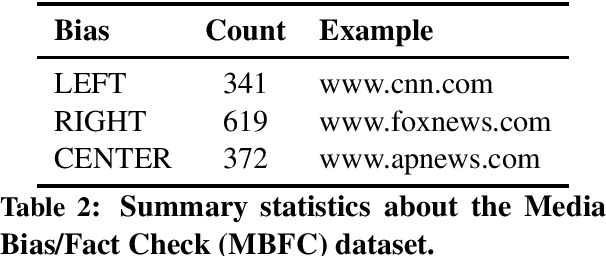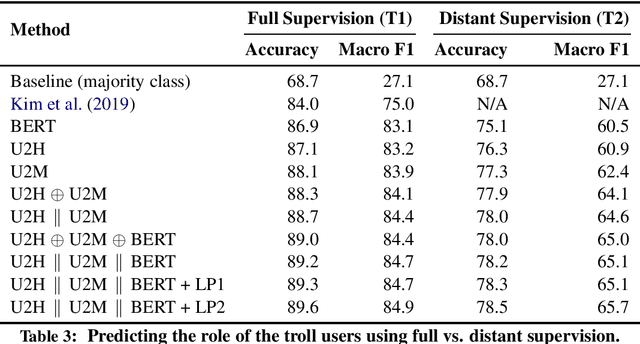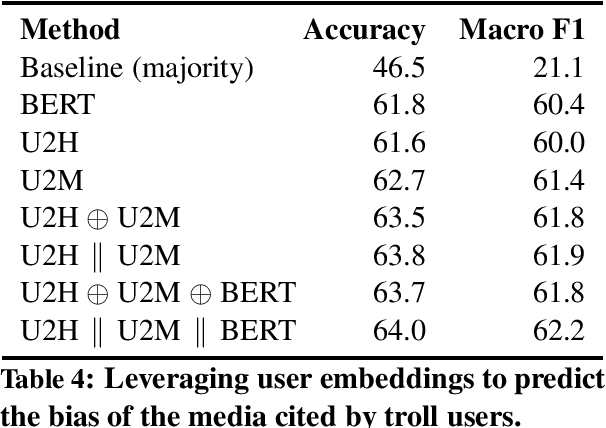Predicting the Role of Political Trolls in Social Media
Paper and Code
Oct 04, 2019



We investigate the political roles of "Internet trolls" in social media. Political trolls, such as the ones linked to the Russian Internet Research Agency (IRA), have recently gained enormous attention for their ability to sway public opinion and even influence elections. Analysis of the online traces of trolls has shown different behavioral patterns, which target different slices of the population. However, this analysis is manual and labor-intensive, thus making it impractical as a first-response tool for newly-discovered troll farms. In this paper, we show how to automate this analysis by using machine learning in a realistic setting. In particular, we show how to classify trolls according to their political role ---left, news feed, right--- by using features extracted from social media, i.e., Twitter, in two scenarios: (i) in a traditional supervised learning scenario, where labels for trolls are available, and (ii) in a distant supervision scenario, where labels for trolls are not available, and we rely on more-commonly-available labels for news outlets mentioned by the trolls. Technically, we leverage the community structure and the text of the messages in the online social network of trolls represented as a graph, from which we extract several types of learned representations, i.e.,~embeddings, for the trolls. Experiments on the "IRA Russian Troll" dataset show that our methodology improves over the state-of-the-art in the first scenario, while providing a compelling case for the second scenario, which has not been explored in the literature thus far.
 Add to Chrome
Add to Chrome Add to Firefox
Add to Firefox Add to Edge
Add to Edge